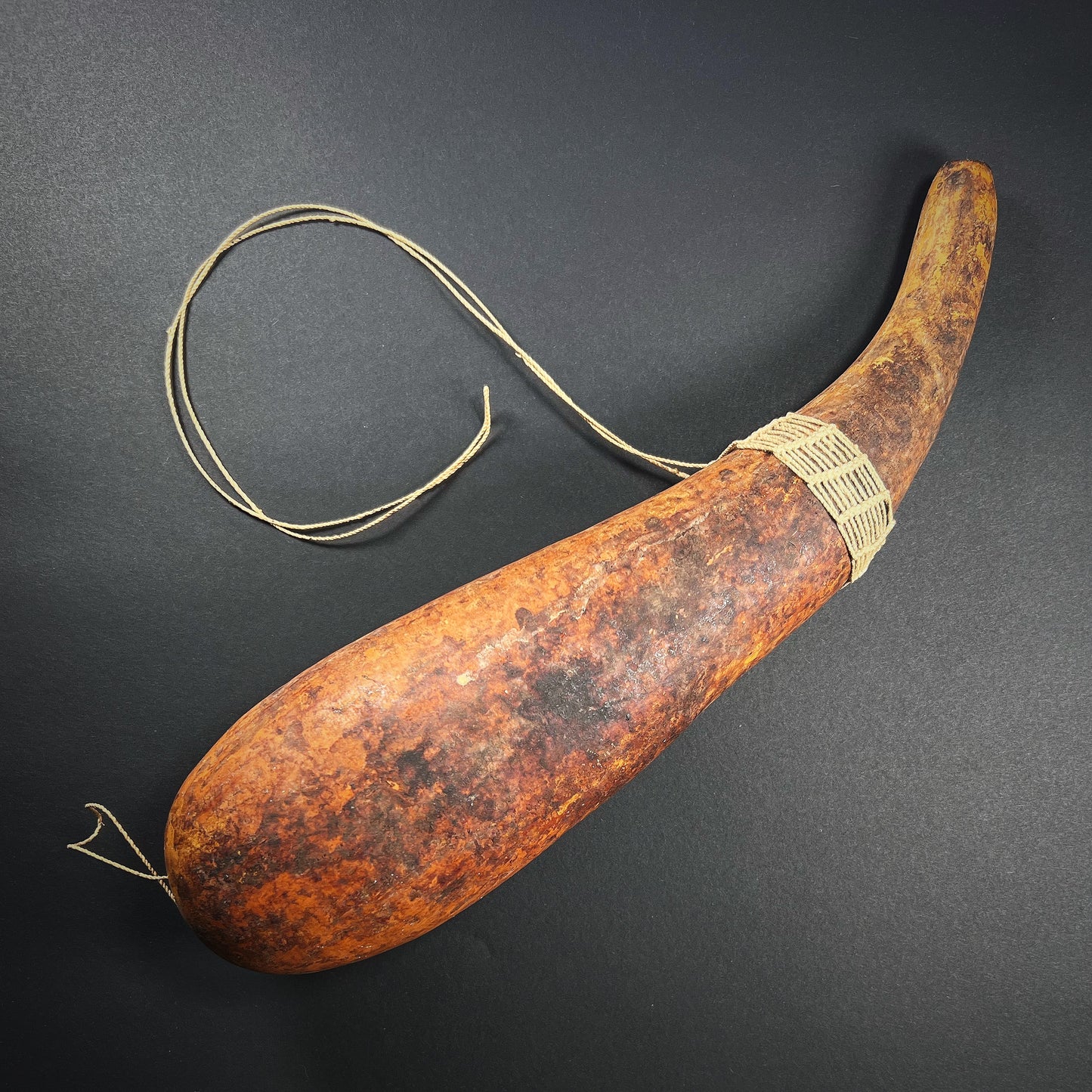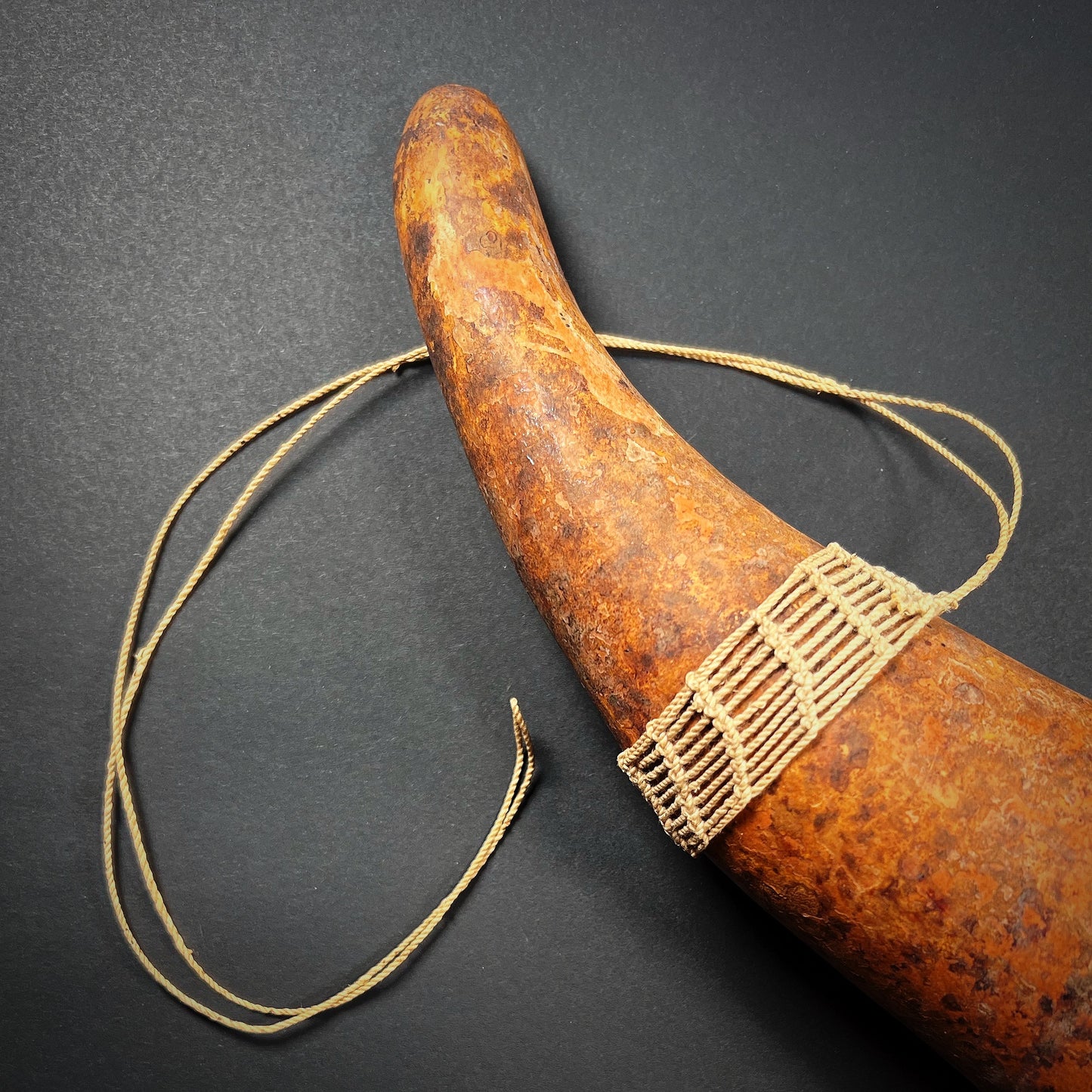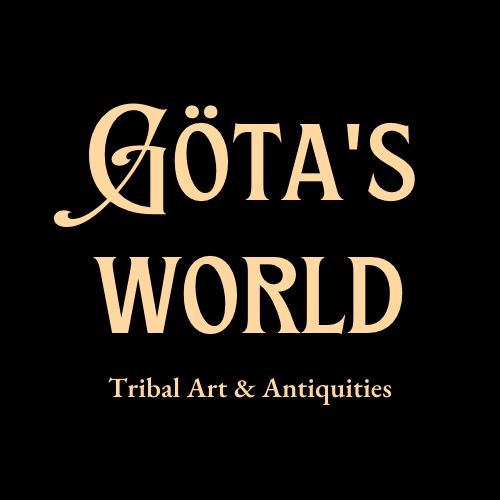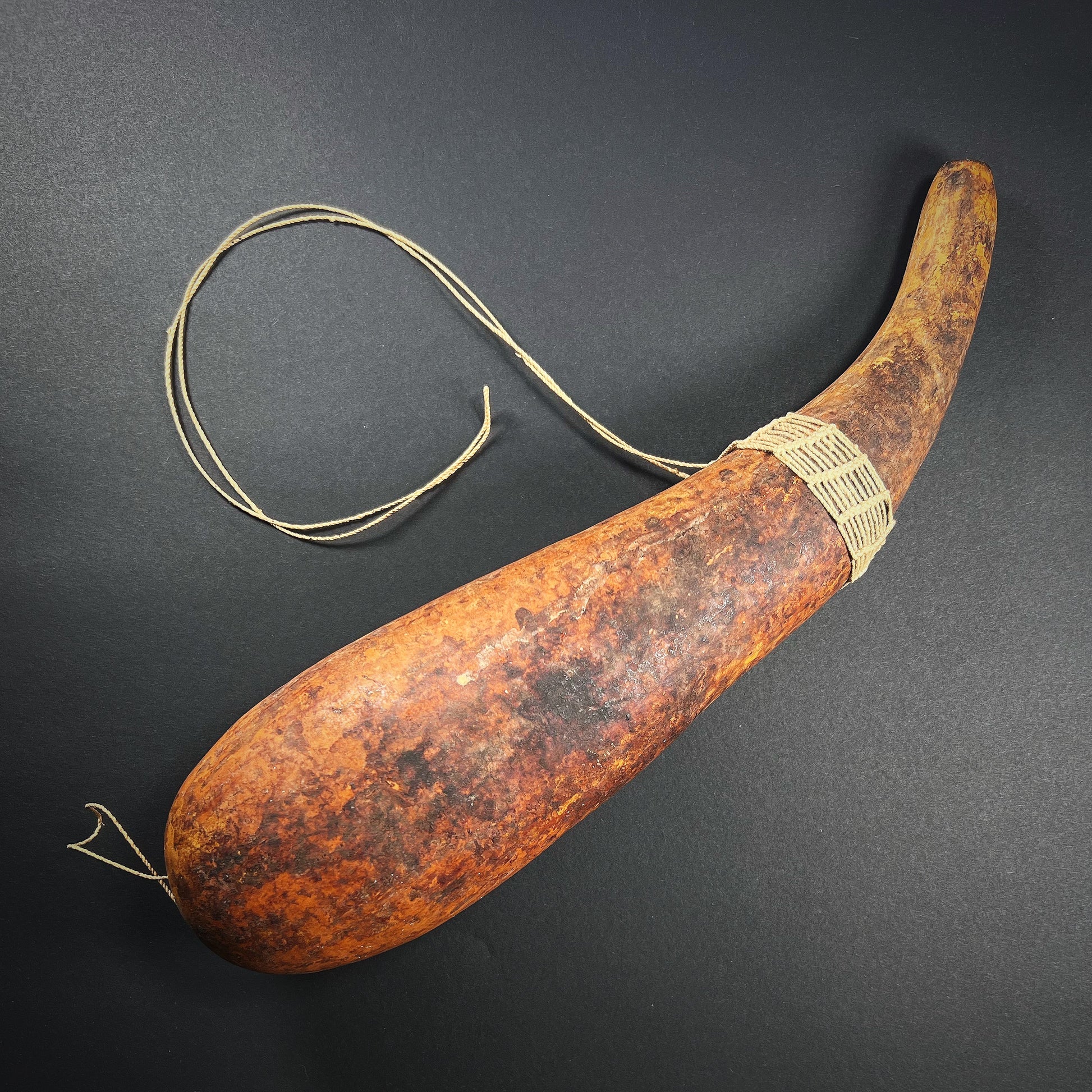Dani Penis Gourd Sheath Koteka
Dani Penis Gourd Sheath Koteka
Couldn't load pickup availability
Dani people, mid. 20th century, Bailem Valley, Irian Jaya, Papua, Indonesia.
Fantastic aged large penis sheath. The penis sheath, koteka (also horim) or penis gourd, is an adornment worn by indigenous male inhabitants of the western parts of Papua New Guinea to cover their penises. The koteka is normally made from dried-out gourd (Lagenaria siceraria) and are kept erect with thread that is attached to the top and looped around the waist. Penis gourds of different sizes serve different purposes: shorter penis gourds are worn when working, while longer and more elaborate penis gourd are worn on festive occasions. Decoration is an integral element in distinguishing between tribes. Normally the koteka is plain, void of any embellishments, having just a string to hold it on the body, but some are ornately decorated with paint, feathers, and cowry shells.
The Dani are a people from central highlands of Western New Guinea (the Indonesian province of Papua). They are one of the most populous tribes in the highlands, with related ethnic groups Yali, Moni and Lani. In traditional Dani village are three different kinds of cottages: Honai, Eweai and Leseai. Leseai is an oblong square kitchen house used for family gatherings, cooking, talking, eating. Honai and Eweai are round sleeping huts. Honai is for men, while Eweai is for women. Following the discovery of the Dani by Westerners at the end of the 1930's, the Dutch established their first colonial post in the remote area of the Bailem Valley in the mid 1950's. Prior to contact with people other than their own, the Dani were a basic, agricultural, hunting and gathering society. The Dani have traditionally been animists who believed in local land and water spirits. Particular attention was given to the restless ghosts of the recently deceased. These ghosts are potentially dangerous and cause misfortune, illness, and death. The Grand Valley Dani conceive of a soul-like substance "seeds of singing" (edai-egen), which is seen throbbing below the sternum. It is believed to be fully developed by about two years of age. Serious sickness or wounds can cause it to retreat towards the backbone, whence it is recalled by heat and by curing ceremonies. At death, this feature becomes a ghost/spirit (mogat), and it must be induced to go off into forest where it cannot harm living.
Until the 1960's, when metal tools were introduced by outsiders, the Grand Valley Dani tools were stone, bone, pig tusk, wood and bamboo. Stone used to make axes (kapak) and adzes. The Dani traditionally had no pottery and gourds were used for water containers. Dani men go around naked except the for a penis sheath (koteka), and ocassionally some bird of paradise feathers, cowry shells or pig tusks or a hair net as an a ornament. Unmarried women have traditionally worn grass skirts (sili) while married women wore a skirt made of fiber coils (yokal) or seeds strung together and hung below the abdomen to cover the buttocks. Dani crafts include intricately woven rattan bracelets (sekan), arm and head bands (milak), necklaces made of cowry shells, feathers and bone (mikak), and the head decorations often made with pig tusks (suale). Western Dani use wide range of wealth items. These included oblong polished stones (ye), slabs of salt, and looped carrier tree bark fibre bags (bilum, noken).
Traditional penis sheath made of a plain, undecorated gourd with a string for the attachment around the loins. The penis gourd is held in place using a small loop of fiber attached to the base of the penis gourd and placed around the scrotum. Good condition. Age-related wear and signs of use. Size approx. 34,0cm x 7,5cm x 7,5cm.
Provenance: Dutch private collection. According to information, originally from the collections of a closed ethnographic museum & foundation in the Netherlands.
References and further reading:
Encyclopedia of World Cultures, Oceania, Karl Heider, edited Terence Hays, G.K.Hall & Company, 1991.
Wealth Items in the Western Highlands of West Papua, Anton Ploeg, Ethnology, Vol.43. No.4 (Autumn 2004), pp. 291-313.
Clothing or Decoration: Exploring the Penis Sheath of Papua New Guinea, Catherine Murphy, Textile Society of America Symposium Proceedings. 717, 2012.(https://digitalcommons.unl.edu/cgi/viewcontent.cgi?article=1716&context=tsaconf)
Papua blood: An account of West Papua, Peter Bang, BoD, 16 Apr 2018.
Dani tribe, Indonesia, Atlas of Humanity
Dani, Encyclopedia.com.
Who are the Dani People of Bailem Valley?, Crooked Compass, 3 Oct 2018.



-
Shipping
The shipment will be prepared in the course of 3-5 days and dispatched via Posti Group Oyj or purchased item(s) can be picked up from our shop during the store's opening hours (Tarkk’ampujankatu 4, 00140, Helsinki, Finland). Within the Finland, all items are shipped via Posti Group Oyj unless otherwise requested. We pack the items carefully and mainly in recycled materials because we want to save nature. You will receive the tracking number for your items by e-mail.
-
Returns
Returns and exchange will be accepted within fourteen days (14) of receipt at the purchaser’s cost to include freight and packaging. Items must be returned in the same condition as when they were shipped, and will not be accepted if damaged or altered in any way. Please inform us via email (info@gotanmaailma.fi) or by calling +358408408352 before sending. We do not accept returns more than 14 days after delivery.



